Sometimes we need to tell Windows where to look for a particular executable file or script. Windows provides a means to do this through the Path Environment Variable. The Path Environment Variable essentially provides the OS with a list of directories to look in for a particular .exe or file when the simple name of the file is entered at the command prompt.
For example, the Notepad.exe application resides in the C:\Windows\system32 directory. However, if we wish to open the Notepad application via the Windows Command Line, we need only type:
Opening Notepad.exe From the Windows Command Line:
C:\Users\John> notepad
This works because the Path variable on Windows by default contains a list of directories where application files and scripts are likely to be located. Each directory in the list is separated by a semi-colon.
Similarly, there is another environment variable, PATHEXT which specifies a list of file extensions which might be found when searching for the proper file within the paths in the Path variable. This is why we are able to type simply “Notepad” at the command prompt, instead of Notepad.exe.
Windows will first search the current directory (where the command prompt is a the time the command is executed) to find a name matching the one typed into the terminal, and then search the directories in the Path variable in order, beginning with the most likely locations, and continue until either a matching file name is located, or else return the “… is not recognized blah blah” message at the terminal.
Once a file with a matching name is located, Windows attempts to match the file extension (if one is present), again in the order specified in the PATHEXT variable. If a match is found, the file is processed accordingly.
There are both User-specific and machine-level PATH variables. Machine Path variables are available globally across the machine, and can only be modified by administrators. User Environment variables can be modified by both administrators, and the user with which the current profile is associated.
Adding a Directory to the User Path Variable from the Command Line
Any user can modify their own PATH variable from the Command Line (unless they have been specifically denied this ability by an administrator).
For example, when we wish to use SQLite from the Windows Command Line, we download the SQLite binaries, and place them in the directory of choice. However, in order to use the SQLite Command Line application without either navigating directly to the folder in which we placed it, or entering the full file path into our Windows Command Line, we need to add the directory containing the SQLite.exe to our User or System PATH environment variable.
Let’s say a user has downloaded the sqlite3.dll and sqlite3.exe binaries and located them in the directory C:\SQLite.
Now, in order to invoke the sqlite3.exe from the command line, we need to add the C:\SQLite directory to our PATH environment variable. We can do this from the command line by using the setx command:
The setx Command – Syntax:
C:\Users\John> setx "%path%;C:\SQLite"
When we modify environment variables using setx, the changes are not available in the current Console session – in other words, in order to see our changes, we need to exit, and open a new Console window. Then, we can use the following technique:
We can examine the contents of the PATH variable by typing:
Output PATH Variable to the Console:
C:\Users\John> echo %PATH%
Which gives the output:
Results of Echo %PATH% Command:
C:\Users\John>echo %PATH% C:\Windows\system32;C:\Windows;C:\Windows\System32\Wbem;C:\Windows\System32\Wind owsPowerShell\v1.0\;C:\Program Files (x86)\Windows Kits\8.1\Windows Performance Toolkit\;C:\Program Files\Microsoft SQL Server\110\Tools\Binn\;C:\Program Files\ Microsoft SQL Server\110\DTS\Binn\;C:\Program Files (x86)\Microsoft SQL Server\1 10\Tools\Binn\;C:\Program Files (x86)\Microsoft SQL Server\110\Tools\Binn\Manage mentStudio\;C:\Program Files (x86)\Microsoft Visual Studio 10.0\Common7\IDE\Priv ateAssemblies\;C:\Program Files (x86)\Microsoft SQL Server\110\DTS\Binn\;C:\Prog ram Files (x86)\Common Files\Acronis\SnapAPI\;C:\Program Files (x86)\Windows Liv e\Shared;C:\Program Files\Calibre2\;C:\Program Files\Microsoft\Web Platform Inst aller\;C:\Users\John\AppData\Roaming\npm;C:\Program Files (x86)\nodejs\;C:\Progr am Files (x86)\Microsoft SDKs\Windows Azure\CLI\wbin;C:\Program Files (x86)\GtkS harp\2.12\bin;C:\Program Files (x86)\Microsoft SDKs\TypeScript\1.0\;C:\SQLite
We can see here that C:\SQLite has now been added to the paths available to the current user.
Adding a Directory to the System Path Variable from the Command Line
In the previous section, we used the setx command to add a directory to the current user’s Path variable. Sometimes, we want to make variables available at the system, or machine level. In that case, we use the same setx command in conjunction with the /m flag. However, we need to run the Command Terminal as Administrator for this to work:
Add a Directory the the System PATH Variable Using the /m Flag:
C:\Users\John> setx /m path "%path%;C:\SQLite"
Adding a Directory to the Path Variable from the GUI
Or, we can do this using the GUI by navigating to Control Panel => All Control Panel Items => System, and then selecting the “Advanced System Settings” link:
Locate Advanced System Settings in Control Panels:
Then locate the “Environment Variables” button:
Open Environment Variables:
Opening Environment Variables, we see the following:
Editing Environment Variables:
Notice in the image above, there are two sections, User Variables for<Current User>, and System Variables.
Also note, there is not currently a Path variable for me, the current user. We will need to add one, and then add our new path to it:
Adding a User Path Variable in the Windows GUI:
Once we hit OK, We see we have the single item added to our user path variable.
Added Path Variable to User Environment Variables:
For some reason, this works differently than when we do this from the Command Line, when we use the setx command from the terminal, the entirety of the system path variable is copied into the user path variable, including the new entry.
If we have Administrator permissions on our machine, we can do the same for the System PATH variable if we so choose.
Removing Directories from the PATH Variable
In some cases, we may need to remove a directory from our PATH variable. In these cases it is recommended to use the GUI, or edit the registry. It’s easiest to simply open the GUI, copy the contents of the PATH variable (either the User Path or the System Path) to a text editor, and remove the entries you want to delete. Then paste the remaining text back into the Edit Path window, and save.
Additional Resources and Items of Interest
- Installing and Using SQLite on Windows
- Getting Started with Git for the Windows Developer (Part I)
- Basic Git Command Line Reference for Windows Users
- Git: Interactively Stage Portions of a Single Changed File for Commit Using git add -p
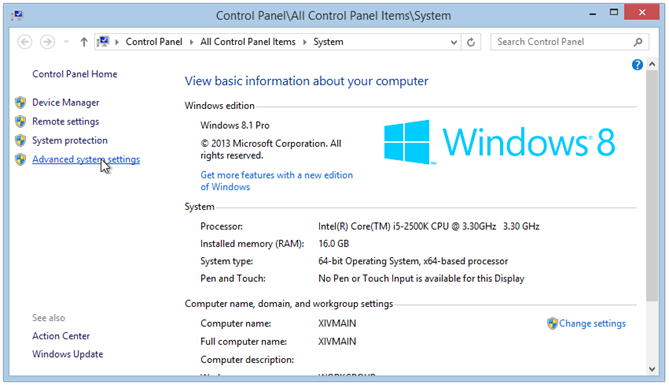
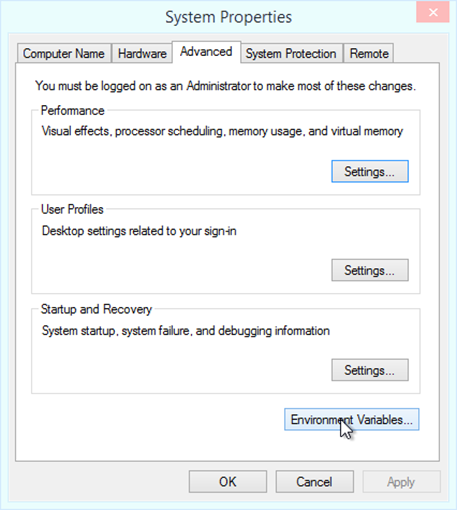
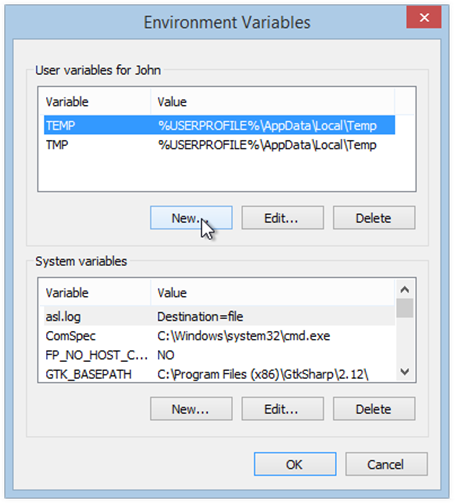
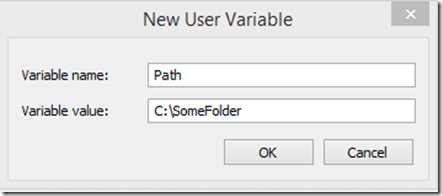
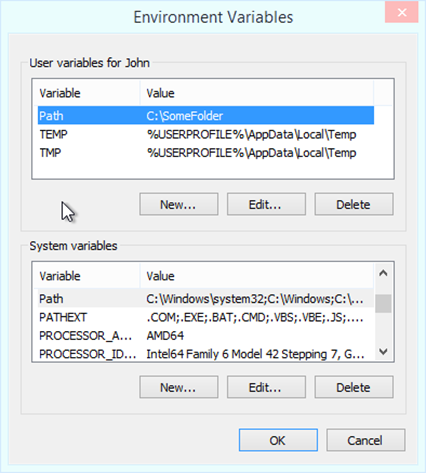
Comments
 Damien Brock
Damien Brock
AuthorI would like to suggest you, try LongPathTool program to resolve this issue.
This tool is very helpful to resolve the issue.
 Josh
Josh
AuthorI don’t think your
C:\Users\John> setx “%path%;C:\SQLite”
will work.
The correct syntax is:
C:\Users\John> setx PATH “%path%;C:\SQLite”
 John Atten
John Atten
AuthorDoh! Thanks! Also, I’m not certain, but I think things changed again with Win10…
 JP
JP
AuthorNot sure if this is due to updates within windows, the set/x tool, or my own configuration, but on my system (Win 7) the above setx command didn’t work for me, producing an ERROR: Invalid syntax message.
C:\> set %PATH%;C:\sqlite
did the trick, hopefully this saves someone else a step as well.
Great writeup, thanks!
 JP
JP
Authorset PATH=%PATH%;C\sqlite
*
 John Atten
John Atten
AuthorPretty sure this is related to updates in Windows. I think the setx command is specific to Windows 8/8.1 (and may even have been deprecated in Windows 10).